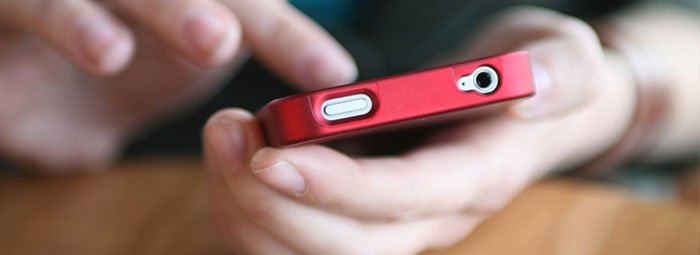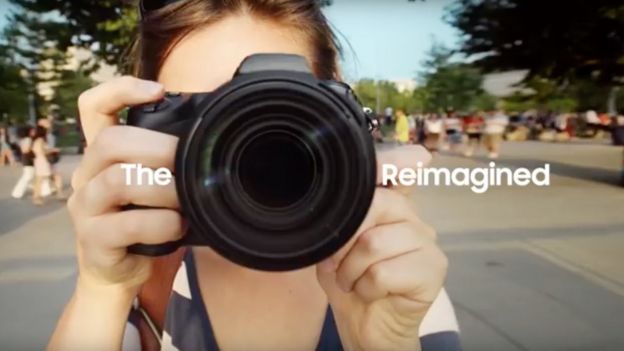
Is smartphone hardware treading water while industrial designers wait for bendy screens and other flexible, futuristic components to make more radical models possible? And will sales continue to decline until they do?
Samsung is casting a long shadow over this year’s Mobile World Congress.
The technology industry get-together in Barcelona is set to be dominated by the launch of its Galaxy S9 and S9+ handsets.
The reaction from many rivals – including Huawei, HTC and LG – appears to have been to hold off their own flagship launches until later in the year.
Based on “leaks”, the S9 looks to be another rectangular, rigid product with an almost-all glass front and sleek metal back.
Samsung’s own teaser campaign has centred on its camera’s capabilities rather than a radical form.
Of the few other new phones expected, speculation has focused on how many lenses they will feature, where their fingerprint sensors will be placed, their display dimensions and whether they will retain a headphone jack, rather than any expectation of a major leap forward.
“The tragedy is that we had two decades of incredible innovation with flip-phones, candy-bar phones, sliders, round phones, square phones – all kinds of different things,” said Ben Wood, from the consultancy CCS Insight.
“But the world changed in 2007 when Steve Jobs pulled the iPhone out of his pocket, and had what became the dominant design.
“We’ve since gravitated to the black rectangle with a touchscreen as the form factor of choice, and it feels like we’ve now reached a technology plateau where firms compete by offering marginal changes around the edges.”
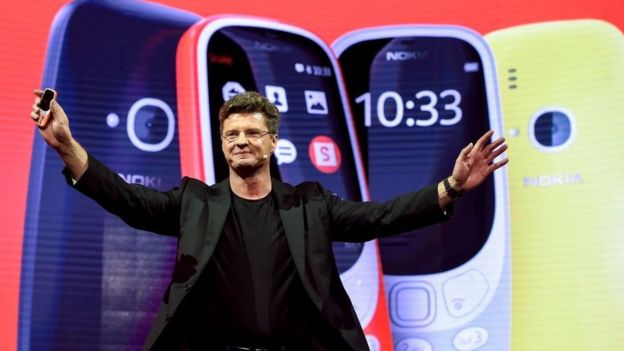 Image copyrightGETTY IMAGES
Image copyrightGETTY IMAGESEven so, there does appear to be an appetite for something “a bit different”.
The big story from last year’s MWC was the Nokia 3310.
The “reimagined” version of the Finnish company’s classic handset had both physical number keys and a screen that bulged at its bottom.
Its manufacturer, HMD Global, struggled to meet demand when it went on sale, despite several critical reviews.
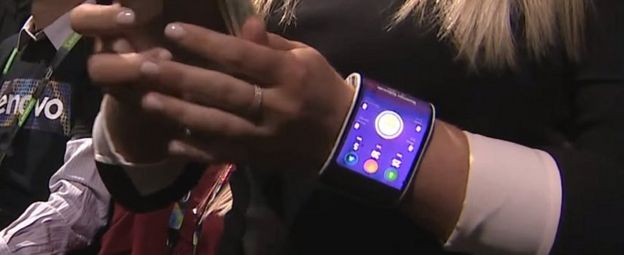 Image copyrightLENOVO
Image copyrightLENOVOMore revolutionary still, Lenovo has previously shown off a foldable phone concept that wrapped around the wrist.
And Samsung has exhibited a prototype with a roll-out display.
Both prompted lots of online chatter but have yet to be turned into commercial products.
But change for change’s sake can be a mistake.
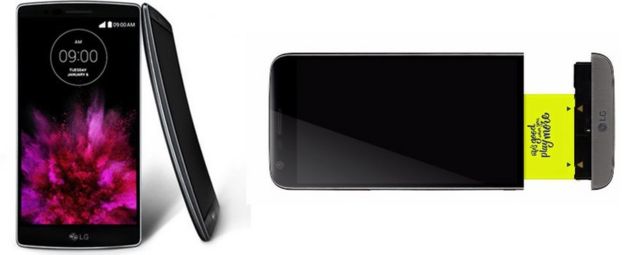 Image copyrightLG
Image copyrightLGTwo generations of LG’s curved-screened Flex smartphones left many consumers confused as to what benefit the design had.
And the South Korean company quickly retreated from the G5’s ability to pop off its bottom to allow bolt-on hardware modules to be added, after sales disappointed.

Pixel planner
It’s somewhat telling about the current state of smartphone design that when the creative lead of Google’s Pixel 2 discussed his work with the BBC, much of the conversation was dedicated to its colour schemes.
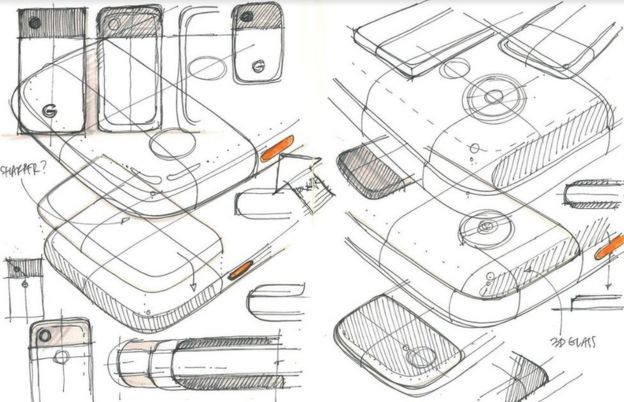 Image copyrightGOOGLE
Image copyrightGOOGLE“On the panda one [there’s a] very bold, very expressive black-and-white colourway, with… a spark of optimistic colour in the orange power button,” Alberto Villarreal said.
The Mexico-born designer said he had been excited by recent trends in the fashion industry, and in particular the way people were combining formal items with athletics wear.
“The mix-and-match of those neutral tones, with some sparks of colour that make it more sporty, are things we definitely looked at for inspiration,” he said.
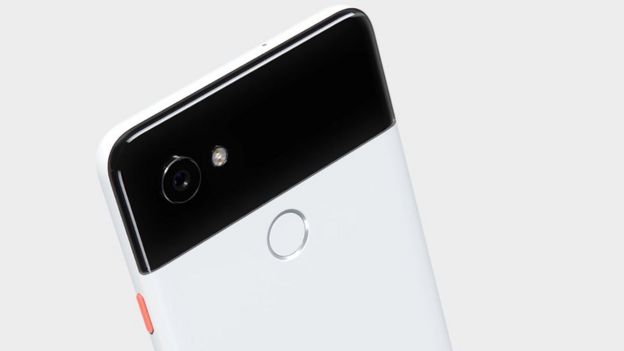 Image copyrightGOOGLE
Image copyrightGOOGLEWhen it came to the rest of the design, Mr Villarreal says he took a less-is-more approach.
“One thing that we been very careful about is making sure that when you look at the phone from the front, the attention of the user is focused on the screen.
“So [it was about] removing anything that is distracting from that.
“We have no branding, no buttons. And even details like the front-facing stereo speakers [is] something that we are treating very discreetly, blending with the black front.
“Even the bezels of the phone are black.”
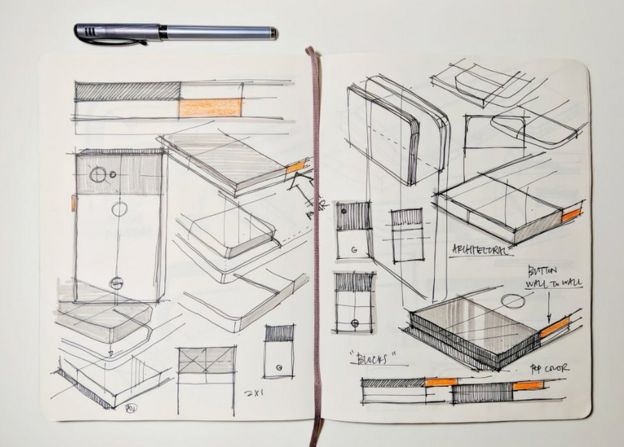 Image copyrightGOOGLE
Image copyrightGOOGLEMr Villarreal declined to discuss how flexible components and other innovations might affect future designs.
But he did say the public should be sceptical when they read reports about technology companies making last-minute hardware changes.
“We were were working on the [Pixel 2] before we had released the previous one,” he said.
“In order to manufacture a product in high-volume, you have to start the pre-production quite a few months before.
“So, I cannot think of major changes that could happen to a product very close to the launch date.”
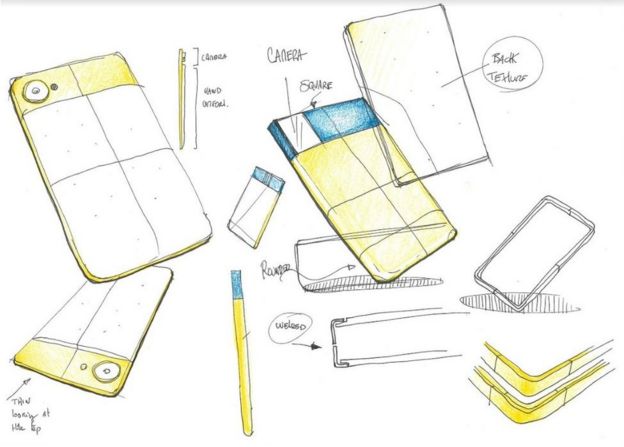 Image copyrightGOOGLE
Image copyrightGOOGLE
Handset-makers may currently be more occupied dreaming up new artificial intelligence features and augmented reality capabilities than trying to rethink how mobiles look in the hand.
But recent shipment figures indicate many consumers don’t see these features as compelling reasons to upgrade.
IDC recently reported the global market was down 6.3% over the October-to-December quarter in 2017 compared with the same three months the previous year, while Strategy Analytics put the fall at 8.8%.
China – the world’s biggest market – represented a particular black spot. Local demand for smartphones suffered a 14% year-on-year plunge, according to Canalys.
While absorbing those figures, it’s worth noting that the data would have been even worse had Apple not released the iPhone X – a device that at least looked different to its predecessors, even if it too conformed to the current minimalistic aesthetic trend.
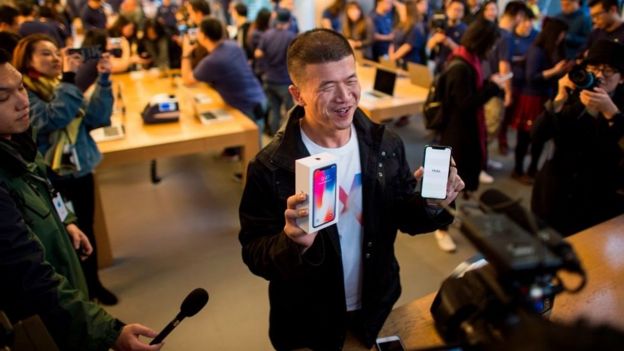 Image copyrightGETTY IMAGES
Image copyrightGETTY IMAGES“Hardware is always the easiest thing to sell – if it looks different you get consumers attention, and then you build from there,” said Carolina Milanesi, a consumer technology analyst at Creative Strategies.
“Trying to get someone into a store for something that looks the same as last year is difficult, even if it has new things to offer.”
She added that shop workers often struggled to explain new artificial intelligence and cloud-based facilities, while many consumers had proved suspicious of the privacy implications.
Return of the flip
That’s not to say there aren’t some companies attempting something out of the ordinary.
UK-based Bullit Group – which previously designed a Kodak-branded phone whose rear resembled a compact camera – has a new rugged CAT phone with a smell sensor, and is also promising to unveil a Land Rover-inspired handset at this year’s MWC.
Movie camera-maker Red is developing the Hydrogen One for later in the year. The phone promises a new type of “holographic display” and is intended to have a variety of camera-based modules attached to its back.
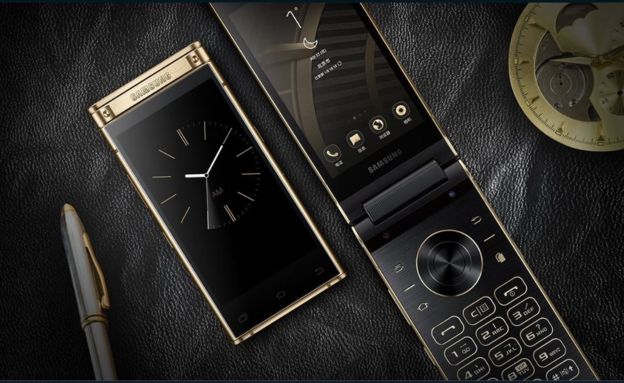 Image copyrightSAMSUNG
Image copyrightSAMSUNGAnd Samsung itself recently launched a modern take on the flip-phone, in China – the W2018 – with screens on both its inside and outside as well as a physical dial-pad.
It is, however, expected to cost upwards of $3,000 (£2,140) – an idiosyncratic look, it seems, can merit an extraordinary price.
source:-BBC


